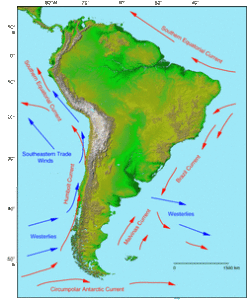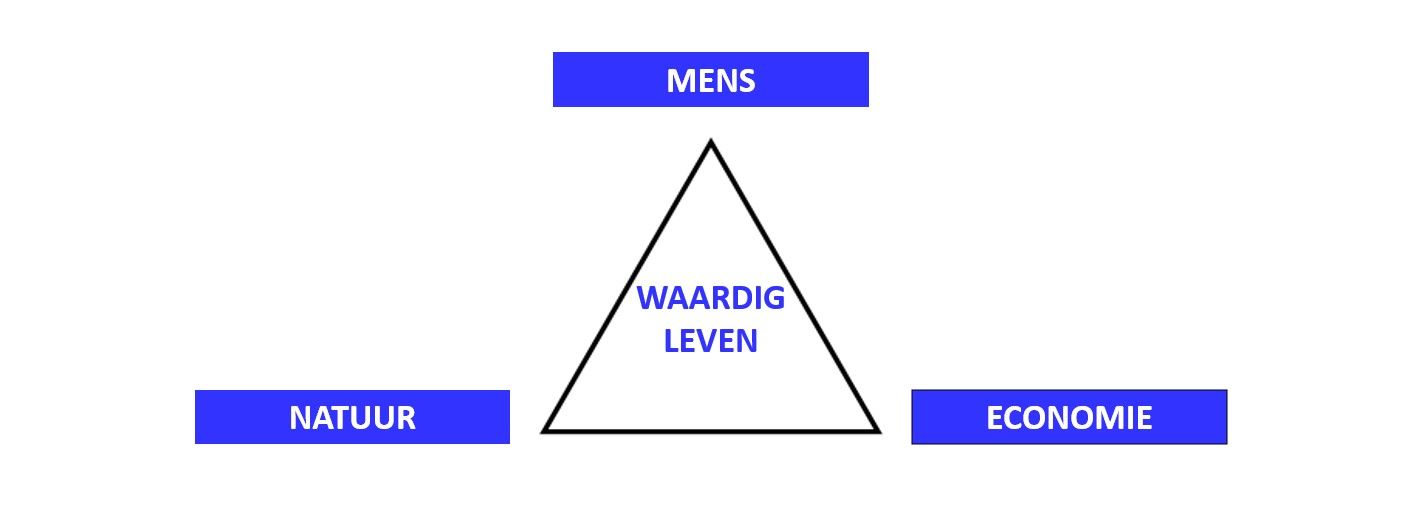Rather a fish meal than fishmeal
The flow paths of major ocean currents are shown in red; Major wind currents are in blue. The Peru Current also called Humboldt Current, is a cold water current of the southeast Pacific Ocean, it has a width of about 550 miles. Slow and shallow, it transports 350,000,000-700,000,000 cu ft of water per second. The Humboldt Current is the largest upwelling system in the world as well as the most productive marine ecosystem. The ecosystem allows approximately 20% of the world’s fish within these currents (https://ussringoffire2014.weebly.com/currents.html)
Anchovies are small, but exceptionally important. They make up the single largest fish catch in the world even though not all anchovies are consumed by humans. Nearly all these highly nutritious fish are ground to feed salmon and other farm-raised valuable species. Marine paleo-ecologists are now studying ancient sediments, and fossils have shown that warming waters once nearly eliminated this valuable resource [Salvatteci et al. 2022].
These scientists studied a core collected from the Humboldt Current system in 2008. In this upwelling system, extremely high anchovy biomasses yield the elevated percentages of the global annual fish catch. The core that was studied contained a section with sediment deposited between 116000 and 130000 years ago, when the water was roughly 2 C warmer than today and contained far less oxygen.
The reconstruction reveals a major species shift in response to warming. Sediment deposited over the past century is dominated by anchovy bones. But during the earlier, warmer period, about 60 % of the fish were other, smaller species, including goby-like species that are about half the size of anchovies and better adapted to low oxygen conditions. They have larger gill surfaces in relation to their body volume and can therefore easily withstand low oxygen water. Also common were species typical of deeper waters that thrive in low-oxygen conditions.
Since it is expected that by the end of the 21st century the Humboldt Current will have significantly higher temperatures and near-shore oxygen depletion [Echevin et al. 2020], the anchovies might well be replaced by smaller goby-like fish. An excess of the latter species would cause huge problems for the fishing industry. Their small size makes them harder to catch, requiring nets with smaller holes. Moreover, since they do not aggregate in dense schools, trawling vessels would need more time to catch sufficient volumes of fish and would burn more fuel. These goby-like fish are also less nutritious than anchovy, which are rich in omega-3 fatty acids. So fewer anchovies would raise the cost of fishmeal, which means more expensive and less nutritious salmon and shrimp for human consumption. It has been known for some time now that vegetal fats should be preferred and investigations are now ongoing [Tejera et al. 2016].
When a fish population is threatened by climate change, one approach to help the species cope is to make fishing management more conservative and to substantially lower the allowable catch. The anchovy population in Peru is already well managed, but a definite improvement would be for people to eat more anchovy directly, rather than feed it to farmed fish. This would help maintain the benefit of the nutritious species for human nutrition. Instead of preparing an anchovy meal, we need to prepare a meal of anchovy!
References
Echevin et al. [2020]. Physical and biogeochemical impacts of RCP8.5 scenario in the Peru upwelling system, Biogeosciences 17, 12, 3317 – 3341
Salvatteci et al. [2022]. Smaller fish species in a warm and oxygen-poor Humboldt Current system, Science 375, 6576, 101 – 104
Tejera et al. [2016]. A transgenic Camelina sativa seed oil effectively replaces fish oil as a dietary source of eicosapentaenoic acid in mice, The Journal of nutrition 146, 2, 227 – 235

